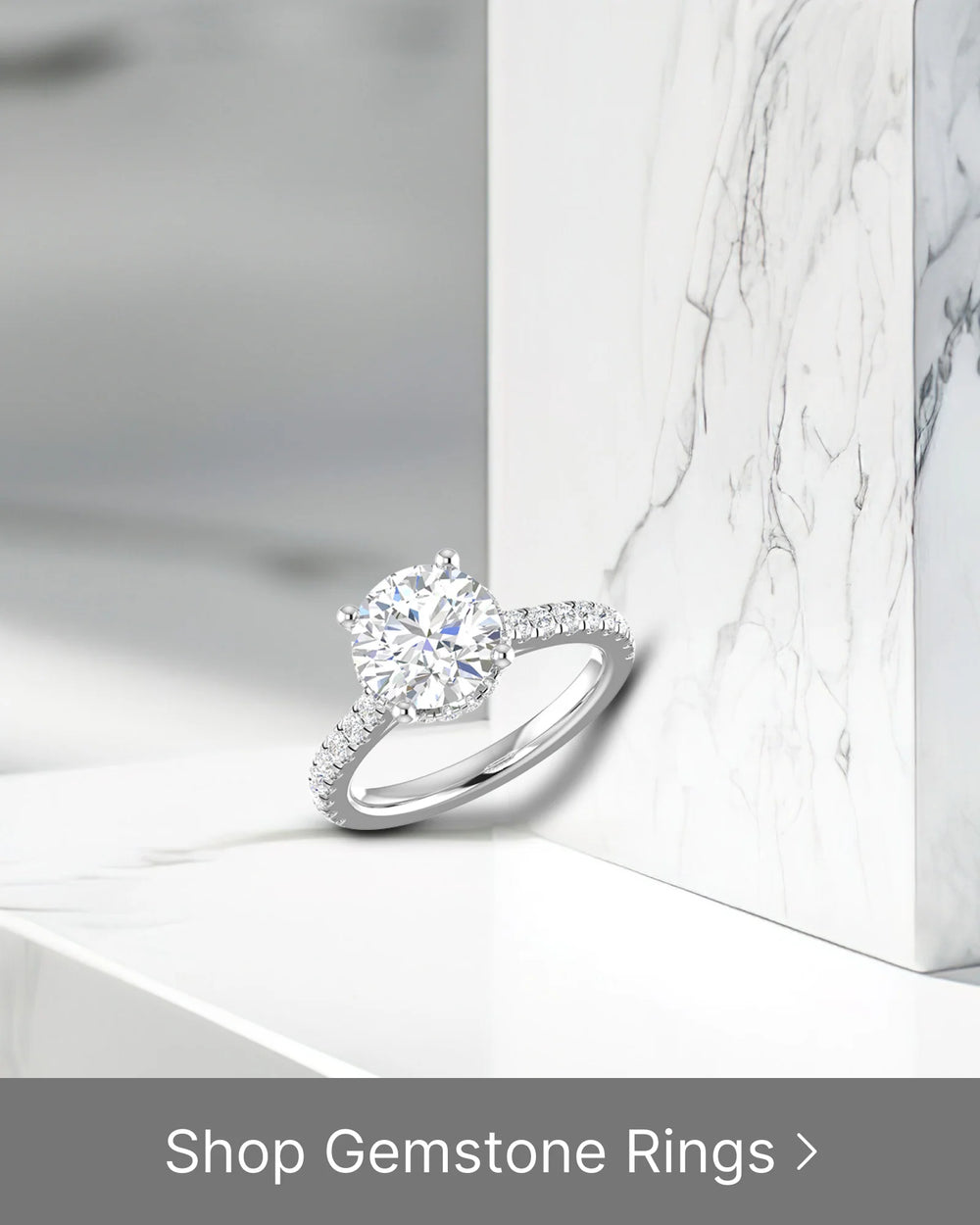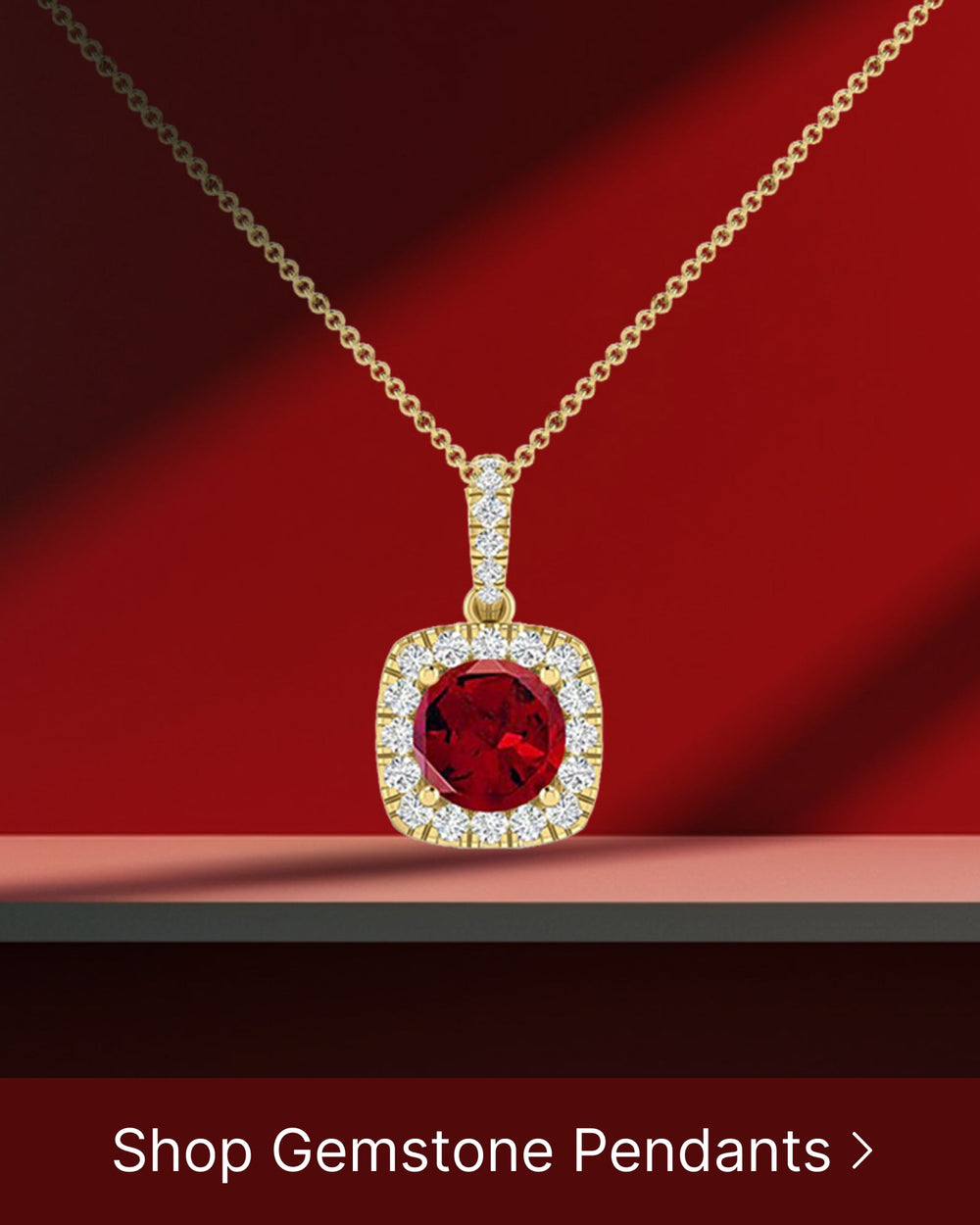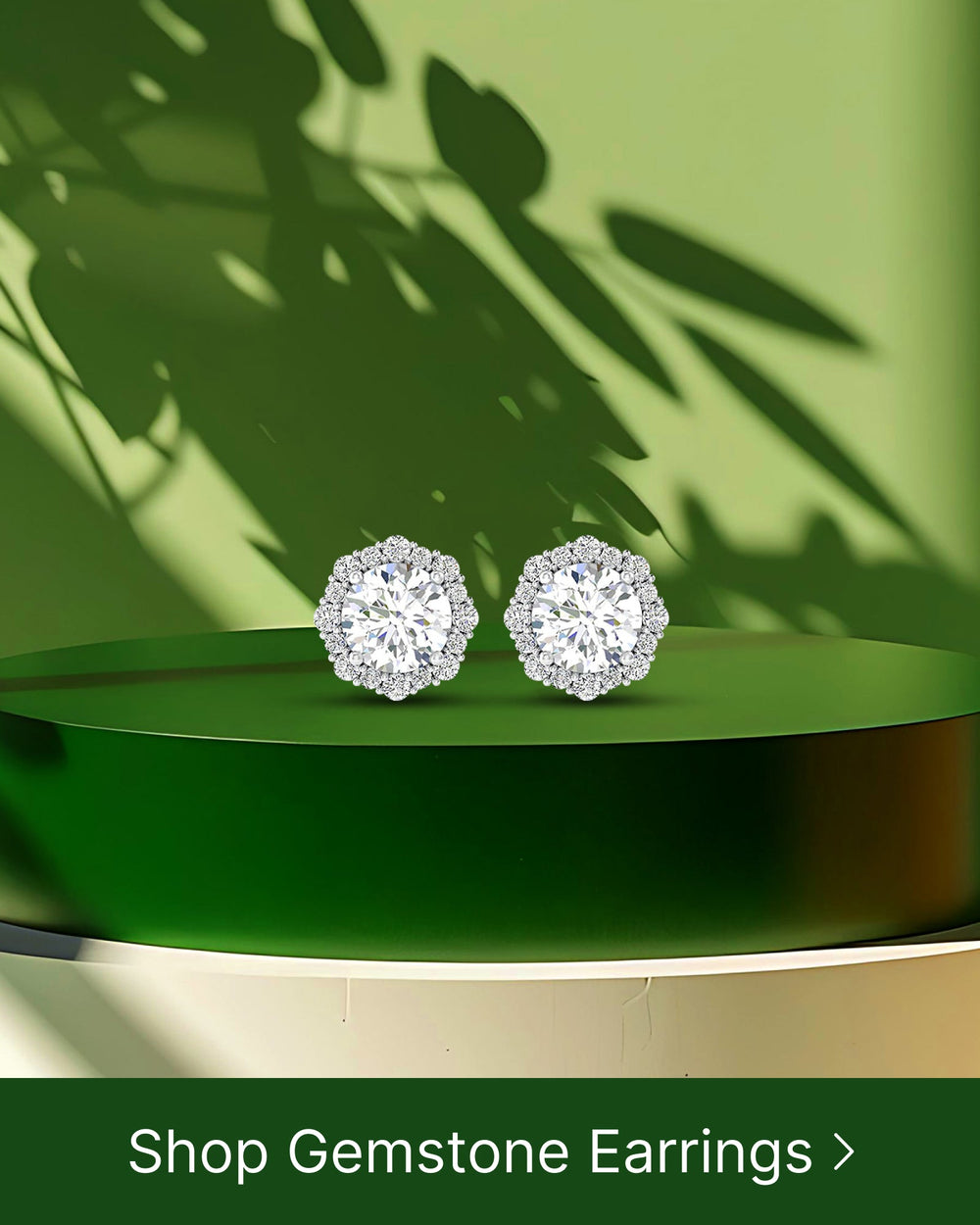Gemstones are fascinating natural creations that come in a vast array of colors and variations. Two popular gemstones, blue topaz and turquoise, often get compared due to their similar blue hues. However, there are distinct differences that set them apart. In this article, we will delve into the world of blue topaz and turquoise, exploring their formation process, physical properties, color spectrum, symbolism, practical considerations, and buying guide. By the end, you will have a comprehensive understanding of what distinguishes these two captivating gemstones.
Understanding Gemstones: Blue Topaz and Turquoise
Before we dive into the specifics, let's establish a foundation by understanding the general characteristics of blue topaz and turquoise as gemstones.
Gemstones have fascinated humans for centuries, captivating our attention with their vibrant colors and unique properties. Blue topaz and turquoise are two such gemstones that have captured the hearts of many. Let's explore their formation process and physical properties in more detail.
The Formation Process of Blue Topaz and Turquoise
Blue topaz is formed through a natural process that involves the interaction of minerals and the earth's elements over millions of years. It begins its journey deep within the Earth's crust, where extreme heat and pressure cause the transformation of minerals into this dazzling gemstone. As the Earth's tectonic plates shift and uplift, blue topaz is brought closer to the surface, waiting to be discovered by gemstone enthusiasts.
Turquoise, on the other hand, is a hydrous phosphate mineral that forms in dry and arid regions. Its creation is a delicate dance between water and minerals. Over time, rainwater seeps into the ground, carrying with it minerals like copper. As the water evaporates in the arid climate, the minerals are left behind, gradually building up to create the beautiful turquoise gemstone.
Both blue topaz and turquoise have fascinating formation processes that highlight the intricate workings of our planet.
The Physical Properties of Blue Topaz and Turquoise
Blue topaz is known for its remarkable clarity and brilliance. Its mesmerizing blue hue can range from a pale sky blue to a deep, rich ocean blue. The gemstone's transparency allows light to pass through effortlessly, creating a dazzling display of color. With a hardness rating of 8 on the Mohs scale, blue topaz is relatively durable and can withstand everyday wear and tear.
Turquoise, while also possessing a vibrant blue color, is generally softer than topaz, scoring between 5 and 6 on the Mohs scale. Its unique shade of blue, often reminiscent of the clear waters of the Caribbean, has made it a popular choice for jewelry throughout history. However, due to its porous nature, turquoise can be more susceptible to scratches and changes in color over time. Proper care and maintenance are essential to preserve its beauty.
When it comes to choosing between blue topaz and turquoise, it ultimately comes down to personal preference and the desired level of durability.
The Color Spectrum: Blue Topaz vs Turquoise
When comparing the color spectrum of blue topaz and turquoise, it becomes evident that each gemstone has its unique shades and qualities.
The Unique Shades of Blue in Topaz and Turquoise
Blue topaz encompasses a wide range of blue shades, from light to vibrant. Some popular variations include sky blue, Swiss blue, and London blue topaz. These variations offer options to suit different preferences and styles.
Additionally, blue topaz can also exhibit other intriguing shades, such as pale aqua or deep navy blue. These variations are created through different mineral impurities present in the gemstone. For example, the presence of iron can give topaz a darker blue hue, while traces of chromium can result in a more greenish-blue shade.
Turquoise, on the other hand, is characterized by its distinct robin's egg blue color, often with brown veining or matrix patterns. This combination creates a striking and recognizable appearance.
Furthermore, turquoise is known for its ability to showcase a wide range of blue tones. From a pale, almost translucent blue to a deep, intense shade reminiscent of the ocean, turquoise offers a spectrum of captivating colors.
How Lighting Affects the Color of Blue Topaz and Turquoise
Both blue topaz and turquoise can exhibit color changes under different lighting conditions. Blue topaz may appear differently depending on the light source, ranging from a cool icy blue in natural daylight to a more electric blue under artificial lighting.
Moreover, the cut and faceting of blue topaz can also influence its color perception. A well-cut topaz with precise angles and facets can enhance the stone's brilliance and color saturation, making it appear even more vibrant and radiant.
Turquoise can also display variations in color, with different intensities of blue depending on the lighting environment. Natural light typically enhances the stone's vibrant blue shade, bringing out its true beauty and captivating allure.
Furthermore, the phenomenon known as "chatoyancy" or "cat's eye effect" can sometimes be observed in turquoise. This optical phenomenon occurs when light reflects off parallel fibers within the stone, creating a luminous band of light that moves across the surface of the gemstone, resembling the eye of a cat.
In conclusion, both blue topaz and turquoise offer a captivating array of shades and qualities within the blue color spectrum. Whether you prefer the versatility of blue topaz with its various shades or the unique beauty of turquoise with its distinct robin's egg blue hue, these gemstones are sure to add a touch of elegance and allure to any jewelry piece.
The Symbolism and Cultural Significance of Blue Topaz and Turquoise
The rich history and cultural significance of blue topaz and turquoise contribute to their enduring popularity in jewelry and adornments.
Blue topaz and turquoise have captivated people's imaginations for centuries, with their mesmerizing hues and fascinating legends. Let's delve deeper into the symbolism and cultural significance of these exquisite gemstones.
Blue Topaz in History and Folklore
Blue topaz has a long and storied history, intertwined with various myths and legends. In ancient Egypt, this gemstone was believed to possess powerful protective properties, capable of warding off evil spirits and promoting good health. The Egyptians held blue topaz in high regard, often using it in their amulets and talismans.
During medieval Europe, blue topaz gained a reputation for its ability to bring tranquility and enhance communication skills. It was considered a symbol of love and loyalty, making it a popular choice for engagement rings and tokens of affection.
Legend has it that blue topaz can also bestow wisdom upon its wearer. It was believed that by wearing this gemstone, one could gain clarity of thought and make sound decisions.
Turquoise in Ancient Cultures and Modern Times
Turquoise, with its striking blue-green color, has been treasured by numerous ancient civilizations. Native American cultures held turquoise in high esteem, considering it a sacred stone that brought protection and good fortune to its wearer. It was often used in ceremonial rituals and as an adornment for tribal leaders.
Ancient Egyptians also revered turquoise, associating it with the goddess Hathor, who represented love, beauty, and joy. The Egyptians believed that turquoise had the power to bring happiness and protect against negative energies.
In modern times, turquoise continues to be cherished for its unique beauty and distinctive appearance in jewelry and crafts. It is often associated with healing properties, believed to promote emotional well-being and enhance spiritual growth. Many people also believe that turquoise can bring balance and harmony to their lives.
Furthermore, turquoise is highly valued for its connection to nature. Its vibrant color evokes images of clear blue skies and pristine waters, reminding us of the beauty and tranquility of the natural world.
Whether it's the ancient Egyptians seeking protection or modern individuals embracing the beauty and symbolism of these gemstones, blue topaz and turquoise continue to captivate and inspire. Their rich history and cultural significance make them timeless treasures that will always hold a special place in the world of jewelry and adornments.
Practical Considerations: Durability and Care
When choosing a gemstone, it's important to consider its durability and how to properly care for it to maintain its beauty and longevity.
The Hardness and Durability of Blue Topaz and Turquoise
Blue topaz, with its higher hardness rating, is generally more durable and resistant to everyday wear and tear. However, it is still recommended to avoid exposing it to extreme force or impact.
Turquoise, being softer than topaz, requires extra care to avoid scratches. It is also sensitive to chemicals, heat, and prolonged exposure to sunlight, which can cause fading or other color changes.
Tips for Cleaning and Caring for Your Blue Topaz and Turquoise
To clean both gemstones, it is advisable to use mild soapy water and a soft brush to gently remove dirt or debris. Avoid using harsh chemicals or ultrasonic cleaners, as they can harm the stones.
When storing blue topaz and turquoise jewelry, it is essential to keep them separate from other pieces to prevent scratches. Additionally, storing them in a cool and dry place will help maintain their color and appearance.
Buying Guide: Blue Topaz and Turquoise
When purchasing blue topaz or turquoise, there are factors to consider to ensure you select high-quality gemstones that suit your preferences and budget.
How to Choose High-Quality Blue Topaz and Turquoise
When selecting blue topaz, look for stones with vibrant and consistent color. Consider the cut and clarity, as these factors greatly affect the stone's brilliance and overall beauty.
For turquoise, examine its color for richness and depth. Avoid stones with excessive veining or discoloration. Natural, untreated turquoise is generally considered more valuable.
Price Comparison: Blue Topaz vs Turquoise
Blue topaz and turquoise vary in price due to factors such as quality, size, and availability. While blue topaz is generally more affordable and accessible, high-quality turquoise can be quite valuable, especially if it is rare and of exceptional quality.
In Conclusion
Blue topaz and turquoise, although sharing a resemblance in their eyecatching blue hues, have distinct characteristics that set them apart. From their formation process and physical properties to their unique shades and symbolic significance, each gemstone offers its allure and charm. Understanding these differences is crucial for appreciating and selecting the right gemstone for your jewelry collection. Whether you're drawn to the brilliance of blue topaz or the captivating beauty of turquoise, both of these gemstones possess a timeless appeal that will continue to captivate jewelry lovers for generations.





